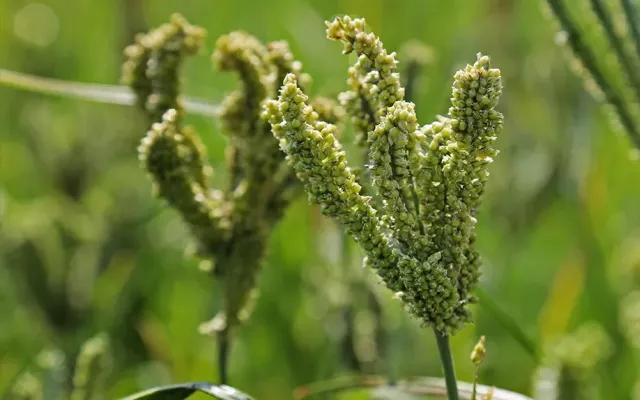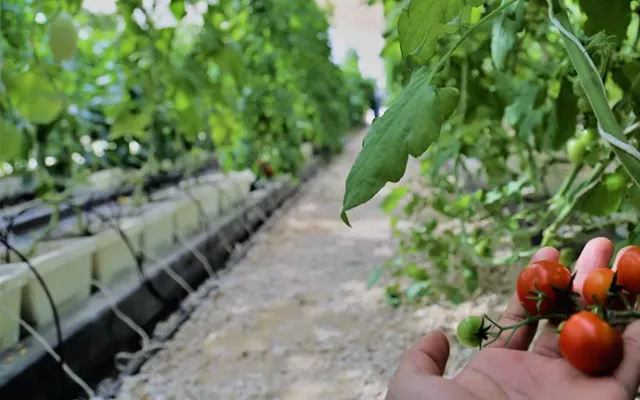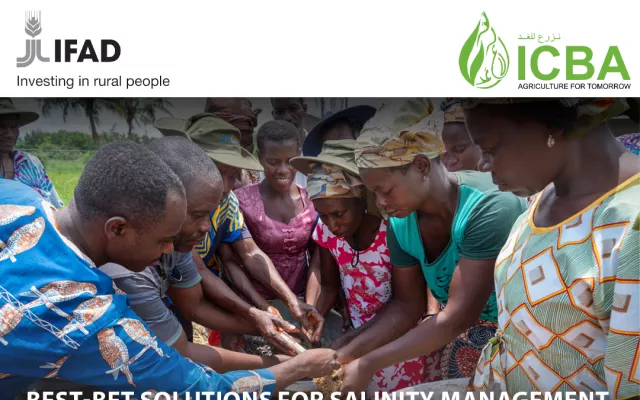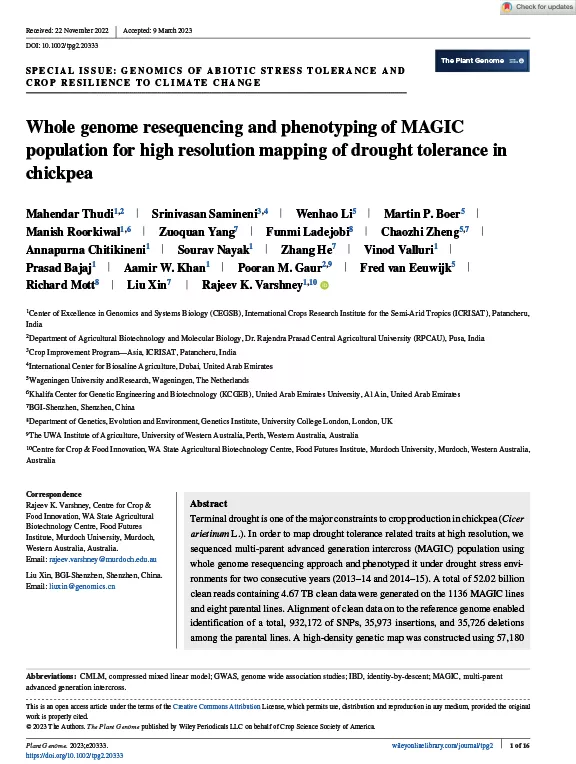Whole genome resequencing and phenotyping of MAGIC population for high resolution mapping of drought tolerance in chickpea
Terminal drought is one of the major constraints to crop production in chickpea (Cicer arietinum L.). In order to map drought tolerance related traits at high resolution, we sequenced multi-parent advanced generation intercross (MAGIC) population using whole genome resequencing approach and phenotyped it under drought stress environments for two consecutive years (2013–14 and 2014–15). A total of 52.02 billion clean reads containing 4.67 TB clean data were generated on the 1136 MAGIC lines and eight parental lines. Alignment of clean data on to the reference genome enabled identification of a total, 932,172 of SNPs, 35,973 insertions, and 35,726 deletions among the parental lines. A high-density genetic map was constructed using 57,180 SNPs spanning a map distance of 1606.69 cM. Using compressed mixed linear model, genome-wide association study (GWAS) enabled us to identify 737 markers significantly associated with days to 50% flowering, days to maturity, plant height, 100 seed weight, biomass, and harvest index. In addition to the GWAS approach, an identity-by-descent (IBD)-based mixed model approach was used to map quantitative trait loci (QTLs). The IBD-based mixed model approach detected major QTLs that were comparable to those from the GWAS analysis as well as some exclusive QTLs with smaller effects. The candidate genes like FRIGIDA and CaTIFY4b can be used for enhancing drought tolerance in chickpea. The genomic resources, genetic map, marker-trait associations, and QTLs identified in the study are valuable resources for the chickpea community for developing climate resilient chickpeas.
Year
2023
Publication Source
The Plant Genome
Publication type
Scientific Paper










